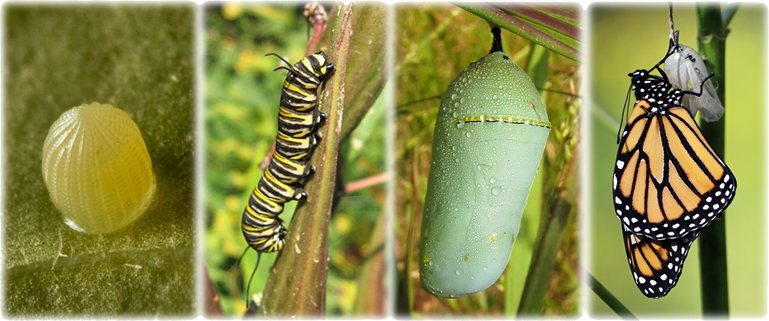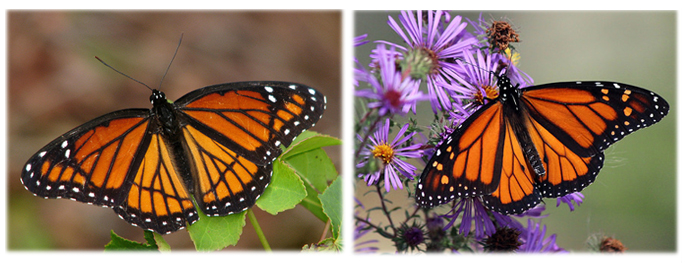(Danaus plexippus)
With its distinct orange and black coloration and its long-distance flight, the monarch (Danaus plexippus) is an iconic butterfly species native to most of North America. Weighing less than a paperclip, a single butterfly can travel up to 3000 miles.
Perhaps the most interesting aspect of the monarch is its migration. In the Northeast, monarchs in southeastern Canada begin to migrate south in early fall (September and October). Many of these individuals will fly all the way to central Mexico where they overwinter in a single mountain forest in central Mexico. During this time, the monarchs will gather in oyamel fir trees.
In February and March, the overwintering monarchs will begin their journey north and east, laying eggs on milkweed as they go. The eggs that hatch into larvae are the next generation. The young caterpillars feed upon milkweed, becoming distasteful to predators in the process. Milkweed sap contains cardiac glycosides which both the caterpillars and adults sequester in their bodies as a defense against hungry predators. After pupating and emerging as new adults, these butterflies will continue the push north. Several more generations will follow, all continuing the journey north, until the last generation reaches Canada and continues the cycle all over again.

Monarch lifecycle: Egg by Eric Heupel Flickr CC by NC 2.0, caterpillar, chrysalis, and adult by Kerry Wixted.
The bright orange coloring of monarchs makes them distinctive, both to people and to potential predators, as it serves as a warning to predators that they are toxic. In fact, other insects that have adapted to feeding on milkweed are also brightly colored, including milkweed bugs, milkweed beetles, and milkweed tussock moth caterpillars. Viceroy butterflies do not use milkweed as a caterpillar host plant but can look similar to monarchs. To tell the difference between monarchs and viceroys, look at the lower wings. If the lower wings have a black bar going across them, it is a viceroy. It’s important to note that male monarch butterflies will have a black spot on their hind wings (see photo below).

Viceroy (left) by Kerry Wixted; male monarch (right) by Ranger Elena Gilroy
Conservation
It’s easy to help monarchs by supporting their life cycle needs. Did you know? Monarchs in Maryland need late season nectar resources the most! To help monarchs, follow these steps:
For additional information, check out the Monarch Joint Venture.
Community Science
Help monarchs by reporting sightings and assisting with tagging studies. Check out the links below for more information:
Education